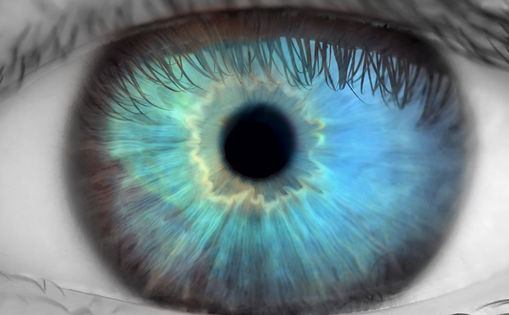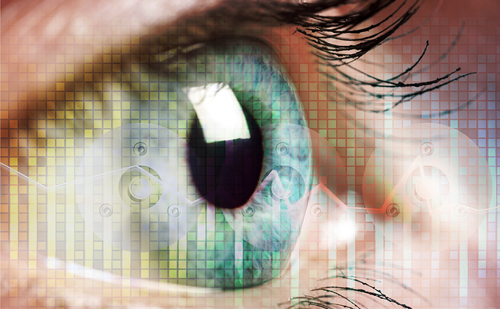Dry eye syndrome is a common disorder that results from decreased tear production, excessive tear evaporation, or abnormality in mucin or lipid components of the tear film. Accepted science states that the tear film comprises three layers: a superficial thin lipid layer produced by the meibomian glands, a middle thick aqueous layer produced by the main lacrimal glands, and an innermost hydrophilic mucin layer produced by both the conjunctiva goblet cells and the ocular surface epithelium.1
Dry eye syndrome is a common disorder that results from decreased tear production, excessive tear evaporation, or abnormality in mucin or lipid components of the tear film. Accepted science states that the tear film comprises three layers: a superficial thin lipid layer produced by the meibomian glands, a middle thick aqueous layer produced by the main lacrimal glands, and an innermost hydrophilic mucin layer produced by both the conjunctiva goblet cells and the ocular surface epithelium.1
The lipid layer produced by the meibomian glands acts as a surfactant. It may also act as a barrier against foreign particles and may have some antimicrobial properties. These glands contain both polar lipids and nonpolar lipids. Increased evaporative loss is predominantly due to meibomian gland dysfunction (MGD).
Dry eye syndrome affects a significant percentage of the population, especially people 40 years old and older. Estimates put the number of people affected in the US at somewhere between 10–14 million, with similar incidence rates outside the US. While the disease may be more common in women, it is not affected by race. It can be caused by decreased tear production, excessive tear production, or an abnormality in the production of mucus or lipids normally found in the tear layer.2
Some physicians report that one in four patients at eye clinics complain of symptoms of dry eye, making it one of the most common complaints seen by ophthalmologists.3 MGD is a widespread and chronic problem often associated with dry eye syndrome, and may be referred to as posterior blepharitis as well.MGD involves the obstruction and inflammation of the glands and may occasionally be caused by gland atrophy.4 The meibomian gland is an androgen target organ; androgen deficiency may promote meibomian gland dysfunction and evaporative dry eye.5
There are other sequelae of MGD that ophthalmologists often see, such as chalazia, punctuate keratoplasty, pannus, phlyctenules, and recurrent conjunctivitis. Possible symptoms of MGD include ocular burning, irritation, fleeting pain, itching, dryness, grittiness, or foreign-body sensation. Other symptoms may include sensitivity to light and excessive blinking. Symptoms of the disease can be exacerbated by smoky or dry environments, indoor heating, or by excessive reading or computer usage. Patients with MGD may also complain of redness of the eyelids and conjunctiva; symptoms tend to be worse upon awakening in the morning. Dry eye syndrome symptoms tend to be more pronounced in the evening.1
Current treatment for MGD includes lid hygiene, oraltetracycline, doxycycline or minocycline, topical erythromycin or bacitracin ointments, homogenized castor oil eye drops, and topical corticosteroids.4
Antibiotic ophthalmic ointments such as erythromycin and bacitracin are used nightly for about 7–10 days to decrease the number of bacteria that break down the lipid layer of a patient’s tear film. Oral antibiotics, most notably tetracycline and doxycycline, help decrease the number of bacteria and help make the oil more fluid so it can flow out of the oil glands more easily.2
Cyclosporine is a highly specific immunomodulator that primarily affects T-lymphocytes, and it does not inhibit the phagocytic system as much as corticosteroids. It is not an inhibitor of wound healing, nor does it produce lens changes, and it therefore has a favorable safety profile. Topical cyclosporine has been used in numerous ophthalmic indications, including post-keratoplasty allograft rejection and corticosteroidinduced glaucoma, Thygeson’s keratitis, and superior limbic keratoconjunctivitis, among others.6
To date, topical cyclosporine 0.05% (Restasis®) is the only therapy that has been clinically shown to increase production of a patient’s own natural tears. It has been studied for treatment of other ophthalmic conditions in addition to chronic dry eye, MGD, ocular rosacea, and contact lens intolerance.
In a clinical trial of 22 people who had developed chronic dry eye in the previous two years, cyclosporine provided rapid onset of symptom relief in many patients: 42% experienced symptom relief within one week and 67% experienced relief of symptoms within one to three weeks.Artificial tear use decreased in 80% of the patients within 30 days.7
Topical cyclosporine therapy has also been shown to be effective for the treatment of mild,moderate, and severe dry eye disease in patients who are unresponsive to artificial tear therapy. A clinical study divided 158 consecutive patients into mild, moderate, and severe dry eye. Improvement was seen in 74.7% of patients overall: 65% of those with mild dry eye, 80% of those with moderate dry eye, and 85% of those with severe dry eye. Subjectively, however, the greatest success was seen in those patients with a mild case of dry eye, although objectively the greatest success was seen in patients with severe dry eye. Tear break-up time improvement was dramatic, indicating a benefit of early treatment.8
Another recent clinical trial on relieving the signs and symptoms of dry eye compared cyclosporine twice a day in conjunction with Systane® (an over-the-counter eye lubricant) once daily; cyclosporine twice daily with Refresh Tears® once daily and Systane alone four times daily.The authors concluded the choice of concomitant therapy used with cyclosporine had significant effects on outcome measures and both supportive therapies were compatible with cyclosporine.9
After three months, however, those on cyclosporine showed meibomian gland inclusion decreases of 50%, while those in the placebo group remained unchanged. Lid margin vascular injection and tarsal telangiectasis had also improved in the cyclosporine group; the mean fluorescein staining score decreased by more than 50% in the cyclosporine group; the tear break-up time improved in the cyclosporine group and worsened in the placebo group. Lissamine green staining improved in the cyclosporine group and remained unchanged in the placebo group; neither group showed significant differences between them in visual acuity, intraocular pressure, tear secretion, corneal infiltrates, corneal neovascularization, bulbar conjunctival hyperemia, or lens opacity.4
A growing body of evidence and anecdotal information indicates topical cyclosporine works well in combination with steroids for the treatment of MGD. When used adjunctively with steroids, topical cyclosporine helps improve tear quality and quantity, improve goblet cell function, improve quality and quantity of mucin, and treat lid disease. Using the two together reduces inflammation and creates a better lipid layer on the tear film. 10
Topical cyclosporine may also be helpful for patients with posterior blepharitis. In dry eye disease, topical cyclosporine is thought to work by modulating the immune cell populations of both the conjunctiva and lacrimal gland. Since posterior blepharitis and dry eye disease often coexist, topical cyclosporine may have been effective in part by alleviating dry eye.
There may, however, be another mechanism at work for the amelioration of posterior blepharitis. MGD is the underlying pathophysiology of posterior blepharitis, and the signs and symptoms of this disease are exacerbated by abnormalities in the lipid layer of the tear film. The abnormal meibum has a melting point above the ocular surface temperature that solidifies and obstructs the ducts, leading to further inflammation and perpetuating the vicious cycle. As topical cyclosporine is a highly specific immunomodulator that affects primarily T-lymphocytes, it may decrease the inflammation of the meibomian glands and reduce their plugging and dysfunction.
The prevailing science believes that if topical cyclosporine only affected patients by improving their dry eye disease, studies should show a relative increase in the Schirmer scores when those on cyclosporine were compared with those on placebo. After six months of cyclosporine therapy, aqueous tear production increased in those with dry eye.That there was no significant difference in Schirmer scores at the three-month follow-up point suggests that differences are due to factors other than an improvement in keratoconjunctivitis sicca.
In a three-month study of 30 patients with posterior blepharitis, cyclosporine was compared with TobraDex® (tobramycin/dexamethasone), with patients being evaluated every two weeks. Posterior blepharitis improved significantly with both cyclosporine treatment and tobramycin/dexamethasone Cyclosporine provided statistically significantly greater improvements in Schirmer’s scores (p <0.001) and tear break-up time (p=0.018) than tobramycin/dexamethasone after 12 weeks of treatment. Eyelid health also improved in both groups, but the mean improvement in gland secretion quality was significantly greater with cyclosporine than with tobramycin/dexamethasone (p=0.015).11
Topical cyclosporine is also being studied for otherophthalmic condition. Early studies indicate using cyclosporine 0.05% in lieu of artificial tears in patients with punctual plugs had a statistically significant improvement of 84%. Further, after six months of cyclosporine 0.05% use with punctual plugs, conjunctival staining improved a whopping 233% when compared with artificial tear use.12
Topical cyclosporine has also been studied for contact lens intolerance. Over the course of five weeks, the cyclosporine group used the emulsion twice daily, before and after contact lens use. The control group was randomized to rewetting drops, carboxymethylcellulose, twice daily. Both groups were to use the rewetting drops as needed, up to four times daily. Participants using cyclosporine increased their contact lens wear time by almost two hours daily compared with just less than one hour daily for the control group. In addition, the participants in the cyclosporine group reduced the amount of rewetting drops needed on a daily basis when compared with the control group.13
Topical cyclosporine has also been studied in patients undergoing laser-assisted in situ keratomileusis (LASIK) and may improve the rapidity of recovery after refractive surgery. In one study, 63% of the 100 patients evaluated complained of dry eye. Patients were randomized to topical cyclosporine post-surgery or placebo post surgery, along with typical post-surgical medication use. No adverse events were reported; more patients (85%) achieved 20/20 or better with adjunctive topical cyclosporine therapy than those without it (44%) at one week post-surgery.14
The treatment has also shown potential for patients with ocular rosacea. Rosacea is a common oculodermal disorder, primarily affecting the sebaceous glands of the face and the meibomian glands of the eyelids.The ocular manifestations of the disease routinely produce tear-film abnormalities that can result in complaints of blurred vision, tearing, and blurring. Typical chronic management of the disease begins with artificial tear solutions, but the drops are not always effective. Systemic therapy in the form of the tetracycline family of antibiotics is usually the next step. Unfortunately, this therapy may be associated with significant side effects such as photophobia, gastrointestinal problems, vaginitis and decreased effectiveness of oral contraceptives.15 More recently, a double-masked clinical trial with rosacea-associated lid and corneal changes were enrolled after any active infections were treated with lid scrubs and antibiotics. Patients were randomized to topical cyclosporine 0.05% or artificial tears for three months. Significant improvements in objective tests, including Schirmer’s and tear break-up tests, were seen in the patients on cyclosporine. Results of that small study suggest topical cyclosporine 0.05% should be evaluated as a first-line treatment for ocular rosacea.16
While the use of topical cyclosporine for dry eye has been well-documented, research into its potential for other ocular diseases is still on-going, but early results are encouraging.







